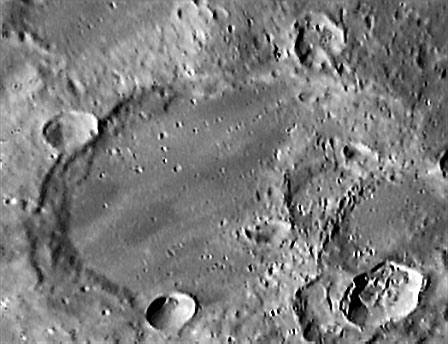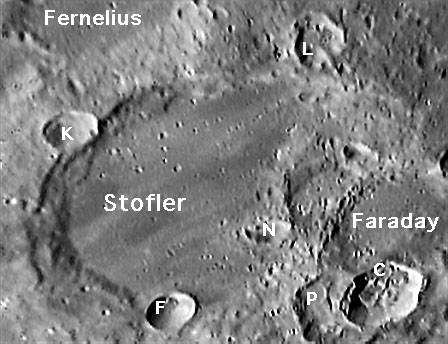Difference between revisions of "September 2, 2004"
| (13 intermediate revisions by the same user not shown) | |||
| Line 1: | Line 1: | ||
__NOTOC__ | __NOTOC__ | ||
=Ray-Swept Stofler= | =Ray-Swept Stofler= | ||
| + | <!-- Start of content --> | ||
<br> | <br> | ||
| − | |||
| − | |||
| − | |||
| − | |||
| − | |||
| − | |||
| − | |||
<table width="85%" border="0" align="center" cellpadding="6" cellspacing="2"> | <table width="85%" border="0" align="center" cellpadding="6" cellspacing="2"> | ||
<tr> | <tr> | ||
<td colspan="2" valign="top"><div align="center"> | <td colspan="2" valign="top"><div align="center"> | ||
| − | + | {{HoverImage|LPOD-2004-09-02.jpeg|LPOD-2004-09-02b.jpeg}} | |
</div></td> | </div></td> | ||
</tr> | </tr> | ||
| Line 18: | Line 12: | ||
<table width="80%" border="0" align="center" cellpadding="8"> | <table width="80%" border="0" align="center" cellpadding="8"> | ||
<tr> | <tr> | ||
| − | <td><div align="center" class="main_sm">Image Credit: [mailto:starman2@flash.net Wes Higgins]</div></td> | + | <td><div align="center" class="main_sm"> |
| + | Image Credit: [mailto:starman2@flash.net Wes Higgins] | ||
| + | </div></td> | ||
</tr> | </tr> | ||
</table> | </table> | ||
| Line 25: | Line 21: | ||
<p class="story" align="center"><b>Ray-Swept Stofler</b></p> | <p class="story" align="center"><b>Ray-Swept Stofler</b></p> | ||
<p class="story" align="left"> | <p class="story" align="left"> | ||
| − | Three-hundred fifty km east of Tycho is a crater which has seen some tough days. Stofler once was a 126 km wide Copernicus-like crater, probably about 4.5 km deep. Its still that wide, and softened relics of its terraces are visible, but the crater has been filled by 1.8 km of a light--hued smooth plains material that buried its central peak. But before the plains formed, other craters bombarded it. An old un-designated crater impacted on the floor of Stofler. Later that crater was cut in half by Faraday, which itself was hit by Stofler P, and then Faraday C (mouseover). At some point the covering of Stofler's floor occurred - probably after Faraday formed (lava or Orientale or Imbrium ejecta?) because that crater's rim seems slightly embayed by the floor material. The youngest crater to form on Stofler was Stofler F, a fresh 17.5 km wide, 2.8 km deep crater. Wes' image shows a classic "turned on a lath" inner wall for F, and two quite unusual hills on the edge of the crater floor. These hills are not central peaks - I don't know what they are. The last thing to happen to Stofler (except for a continuing rain of micro-meteorites) was its draping by bright ray material from Tycho about 810 m.y. ago. | + | Three-hundred fifty km east of Tycho is a crater which has seen some tough days. Stofler once was a 126 km wide Copernicus-like crater, probably about 4.5 km deep. Its still that wide, and softened relics of its terraces are visible, but the crater has been filled by 1.8 km of a light--hued smooth plains material that buried its central peak. But before the plains formed, other craters bombarded it. An old un-designated crater impacted on the floor of Stofler. Later that crater was cut in half by Faraday, which itself was hit by Stofler P, and then Faraday C (mouseover). At some point the covering of Stofler's floor occurred - probably after Faraday formed (lava or Orientale or Imbrium ejecta?) because that crater's rim seems slightly embayed by the floor material. The youngest crater to form on Stofler was Stofler F, a fresh 17.5 km wide, 2.8 km deep crater. Wes' image shows a classic "turned on a lath" inner wall for F, and two quite unusual hills on the edge of the crater floor. These hills are not central peaks - I don't know what they are. The last thing to happen to Stofler (except for a continuing rain of micro-meteorites) was its draping by bright ray material from Tycho about 810 m.y. ago. </p> |
| − | <p class="story" align="left"> | + | <p class="story" align="left"> </p> |
<blockquote> | <blockquote> | ||
<p align="right"> — [mailto:tychocrater@yahoo.com Chuck Wood ]</p> | <p align="right"> — [mailto:tychocrater@yahoo.com Chuck Wood ]</p> | ||
| Line 33: | Line 29: | ||
Aug 16, 2003, Starmaster 14.5 Newt. Reflector working at F/28, Toucam Pro webcam, stack of 68 frames .</p> | Aug 16, 2003, Starmaster 14.5 Newt. Reflector working at F/28, Toucam Pro webcam, stack of 68 frames .</p> | ||
<p><b>Related Links: </b><br> | <p><b>Related Links: </b><br> | ||
| − | [ | + | [http://www.lpi.usra.edu/research/lunar_orbiter/images/img/iv_107_h2.jpg Lunar Orbiter IV View ]<br> |
Rukl Atlas of the Moon, Sheet 65</p> | Rukl Atlas of the Moon, Sheet 65</p> | ||
| − | <p><b>Tomorrow's LPOD:</b> Snake in the Mare</p> | + | <p><b>Yesterday's LPOD:</b> [[September 1, 2004|Hundred Year Old Hevelius]] </p> |
| + | <p><b>Tomorrow's LPOD:</b> [[September 3, 2004|Snake in the Mare]] </p> | ||
<p> </p> | <p> </p> | ||
</tr> | </tr> | ||
| Line 47: | Line 44: | ||
<td><p align="center" class="main_titles"><b>Author & Editor:</b><br> | <td><p align="center" class="main_titles"><b>Author & Editor:</b><br> | ||
[mailto:tychocrater@yahoo.com Charles A. Wood]</p> | [mailto:tychocrater@yahoo.com Charles A. Wood]</p> | ||
| − | < | + | <!-- Cleanup of credits --> |
| − | + | <!-- Cleanup of credits --> | |
| − | < | + | <!-- Cleanup of credits --> |
| − | + | <!-- Cleanup of credits --> | |
| − | < | + | <!-- Cleanup of credits --> |
| − | + | <!-- Cleanup of credits --> | |
| − | < | + | <!-- Cleanup of credits --> |
| − | + | <!-- Cleanup of credits --> | |
| − | + | <!-- Cleanup of credits --> | |
| − | + | {{wiki/ArticleFooter}} | |
| − | < | ||
| − | |||
| − | ---- | ||
| − | |||
| − | |||
Latest revision as of 14:38, 15 March 2015
Ray-Swept Stofler
Image Credit: Wes Higgins |
|
Ray-Swept Stofler Three-hundred fifty km east of Tycho is a crater which has seen some tough days. Stofler once was a 126 km wide Copernicus-like crater, probably about 4.5 km deep. Its still that wide, and softened relics of its terraces are visible, but the crater has been filled by 1.8 km of a light--hued smooth plains material that buried its central peak. But before the plains formed, other craters bombarded it. An old un-designated crater impacted on the floor of Stofler. Later that crater was cut in half by Faraday, which itself was hit by Stofler P, and then Faraday C (mouseover). At some point the covering of Stofler's floor occurred - probably after Faraday formed (lava or Orientale or Imbrium ejecta?) because that crater's rim seems slightly embayed by the floor material. The youngest crater to form on Stofler was Stofler F, a fresh 17.5 km wide, 2.8 km deep crater. Wes' image shows a classic "turned on a lath" inner wall for F, and two quite unusual hills on the edge of the crater floor. These hills are not central peaks - I don't know what they are. The last thing to happen to Stofler (except for a continuing rain of micro-meteorites) was its draping by bright ray material from Tycho about 810 m.y. ago.
Technical Details: Related Links: Yesterday's LPOD: Hundred Year Old Hevelius Tomorrow's LPOD: Snake in the Mare
|
Author & Editor: COMMENTS?Register, Log in, and join in the comments.
|





